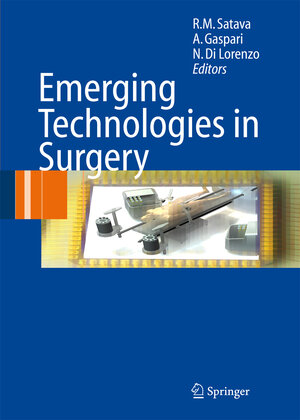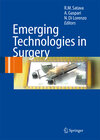
From the reviews:
„... Many books about the technology and the future become outdated and even farcical in a short amount of time. Think about Cold War era predictions about colonizing the moon and mining on Mars at the turn of the millennium, or predictions of early computer experts that computers would be limited to government and a few large companies. The authors of this book combine future predictions with discussions about the process of change and education to make a powerful and enduring contribution to the field...“ (T. D. Light, University of Iowa, Doody's, December 2007)
„Emerging Technologies in Surgery is a very enjoyable book, edited by 3 surgeons widely considered leaders in the field of emerging surgical technology. It is easy to read, logical, insightful, and clearly meant for practicing surgeons who do not have a background in advanced physics. Most of the contributors are eminent surgeons from around the world and are experts in new procedures or leaders in major technological advancements in their fields. The result is a balanced, practical, and clinically relevant reference for surgeons … .“ (Hasan B. Alam, Journal of the American Medical Association, October, 2009)
Emerging Technologies in Surgery
herausgegeben von Richard M. Satava, Achille Gaspari und Nicola LorenzoTechnologies now emerging will have tremendous effects on surgeons and surgical practice. This volume looks ahead 10 to 20 years to predict and illustrate these trends in detail. The book opens with an overview of disruptive technologies, and their economic, scientific, ethical and social implications. Next comes a section on the dramatic effects of online technology in surgical education: the many ways that the Internet, virtual reality and simulation technology will change training and education. A section on Robotics covers computer-guided surgery, robotics and endoluminal therapies. Innovations in the design and use of surgical instruments, including MEMS and Nanotechnology are outlined, along with new techniques for hemostatic dissection. Focusing on Bioengineering, the book reviews tissue engineering and artificial organs, genetic engineering, stem cells and delivery systems, emerging transplantation technologies and the brain-machine interface. A concluding section, entitled Beyond the Future, discusses ways of adapting to future technologies.



